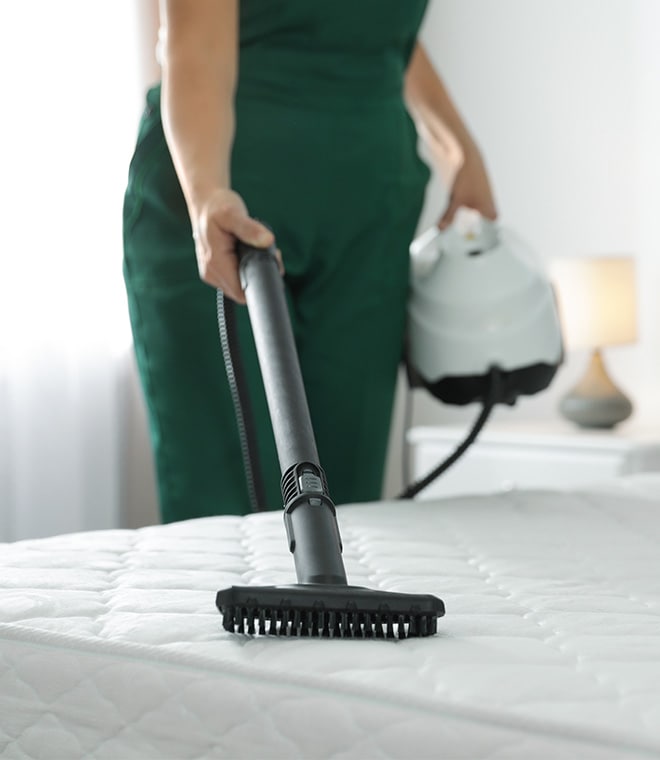Health
Saline nasal spray: A natural alternative
Sanjay “Jay” Patel, DO | Allergy & Immunology Mar 24, 2025 • 8 min
When nasal congestion makes it difficult to breathe easily, you don’t necessarily have to reach for an over-the-counter medication to address the problem. Nasal symptoms like stuffiness, runny nose and dryness can make it difficult to complete your daily routine and rest comfortably at night. Fortunately, there are many treatments available to ease these symptoms, including saline nasal sprays. Due to the benefits and low risk of side effects, healthcare providers frequently recommend several types of saline-based options.
What is a saline solution?
Saline solution is a mixture of water and sodium chloride, commonly referred to as salt. When producing saline solution, manufacturers boil, distill or filter the water to eliminate microorganisms like bacteria and viruses.
What are the main types of saline solution?
For nasal treatments, saline solution comes in several forms. They all provide similar benefits, but the way you use them differs.
Nasal sprays typically come in a bottle. Some sprays are premixed and ready to use. Others, like saline irrigation, may require you to mix a saline powder with distilled, filtered or boiled water yourself. Either way, the bottle comes with an applicator tip that fits into the nostrils. Depending on the specific product, you will either squeeze the bottle itself or push a plunger or button at the top that releases the saline solution into your nostril. Some irrigation systems have additional steps.
Saline nose drops feature a medicine dropper top rather than an applicator tip. To use drops, you unscrew the dropper, squeeze the bulb to draw in saline solution and then drop the saline into your nose. Typically, healthcare providers recommend nose drops for babies and young children. Saline nasal spray is usually recommended for older children, teens and adults. You may need to experiment using different types of saline sprays and drops to find a solution that’s most comfortable for you or your child.
What does saline spray do?
A saline spray works by thinning out the mucus and allowing air to pass more freely through your nasal passages. Congestion occurs when the nasal passages become inflamed, causing mucus to become trapped. Additionally, particulates in the air such as pollens, pet dander or pollutants can stick to the inside lining of your nose and lead to swelling or inflammation.
In addition to thinning the mucus, the saline solution moisturizes the lining inside of the nasal passages to ease dryness and discomfort. The sprays also help rinse out particulates that may be the source of your symptoms.
What can you use nasal saline spray for?
Healthcare providers may recommend saline nose spray for a variety of nasal-related ailments, including:
- Nasal dryness: A saline spray can ease nasal discomfort caused by dry air.
- Allergies: Saline solution can make it easier to breathe when you experience symptoms of indoor or outdoor allergies, and it may help flush out pollen and other allergens.
- Cold and flu: Saline nasal spray can temporarily alleviate stuffiness associated with infections.
- Sinusitis: The thinning effect of saline nasal spray on mucus can ease congestion related to sinusitis. It may also reduce the risk of bacterial and viral sinus infections.
- Nosebleeds: Medical providers may recommend daily use of saline spray to reduce the frequency of nosebleeds caused by dry nasal passages.
Because they don’t contain medications, saline nose drops and sprays are generally suitable for people of all ages. They can be a good option for those who are pregnant or nursing, people who can’t take medications due to side effects or the risk of drug interactions, and those who prefer a natural approach to addressing nasal symptoms. Do not use saline nasal sprays or washes if your nasal passages are severely blocked.
How to use nasal spray
It’s important to use saline nasal spray properly to get the most benefits. Follow the directions on the product, which may differ from brand to brand. In general, these are the steps for using nasal spray:
- Wash your hands thoroughly.
- Shake the bottle.
- Tilt your head down slightly.
- Insert the tip into one nostril.
- Angle the bottle so that the tip is pointed toward the back of your head.
- Spray and remove the bottle from your nostril.
- Inhale slowly through your nose.
- Shake the bottle again.
- Insert the tip into the other nostril and repeat the process.
- Place the cap back on the saline spray.
- Wash your hands.
Nasal washes require a different procedure. Methods of use vary, but these are some general instructions:
- Wash your hands thoroughly.
- Fill the provided bottle with distilled, micro-filtered, or boiled and cooled water.
- Pour the contents of the saline packet into the bottle.
- Place the cap on the bottle, cover it with one finger for extra security, and shake the bottle to mix.
- Stand over the sink with your head tilted to one side and your mouth open.
- Slide the tip into the top nostril.
- Squeeze the bottle until the saline begins to flow out of your lower nostril.
- Repeat steps with the other nostril.
- Wash your hands.
Don’t share nasal spray or nose drops with other people, as this could spread germs. If more than one person in your household needs a saline spray, buy a bottle for each person. Label them with a permanent marker or store them in different locations so they don’t get mixed up.
When to use saline nose drops or spray
Nasal saline spray and drop products can provide relief from congestion, nasal dryness and nosebleeds. However, your specific symptoms and your health history will determine if a saline solution is the best treatment for you. In some cases, a saline nasal spray or saline nose drops may be more beneficial when used with other interventions, like an oral antihistamine or decongestant. Your healthcare provider can help you explore the best treatment options for your individual needs.
Updated March 2025.
Sources:
- https://my.clevelandclinic.org/health/treatments/24286-nasal-irrigation
- https://health.clevelandclinic.org/how-to-use-nasal-spray/
- https://www.med.umich.edu/1libr/AmbulatoryCare/SalineNasalSprays.pdf
- https://medlineplus.gov/ency/patientinstructions/000801.htm
- https://www.nebraskamed.com/ear-nose-throat/will-nasal-spray-relieve-my-allergies-runny-nose-congestion



